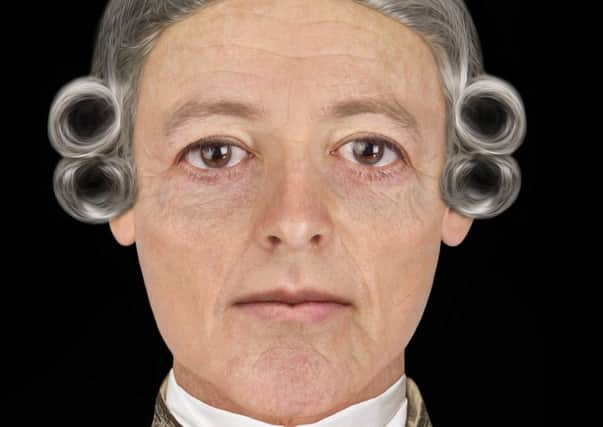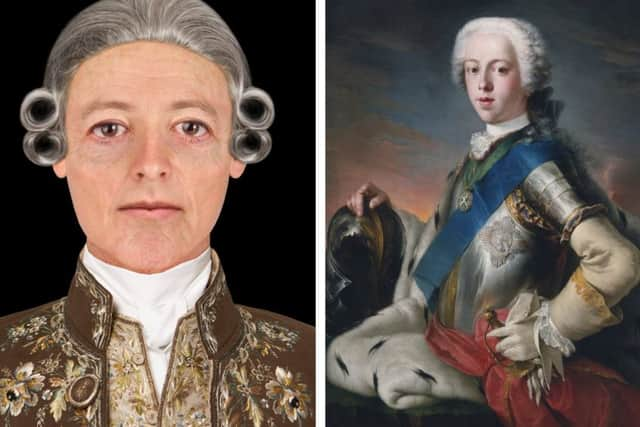Bonnie Prince Charlie’s face redrawn using Jacobite leader’s death mask


Forensic artist Hew Morrison used a Bronze cast of the original death mask that was made for the Prince in 1788 to make the image.
The cast is held by Inverness Art Gallery and Museum, where the new portrait is now also on show.
Advertisement
Hide AdAdvertisement
Hide Ad“We believe this new portrait is the only opportunity we have of coming face to face with a true likeness of Bonnie Prince Charlie,” a spokesman for High Life Highland, which runs the art gallery and museum, said.


Prince Charles Edward Stuart, who died aged 68 from a stroke, appears in countless portraits but seldom sat for an artist.
#
How he truly appeared has been hard to determine over time given the multitude of images made of him, many which deliberately flattered the Prince or were used as Jacobite propaganda tools.
It is believed to be the first time a museum object of this kind has been used to create a facial reconstruction.
Mr Morrison has worked on many high profile forensic reconstructions for museums across the country but more typically uses human skulls to recreate a face.
Mr Morrison said: “Working on this project has been a great opportunity to recreate the face of a highly significant individual from Scottish history.
“As the work progressed, what was revealed was the face of a curious, strong, but heavily burdened character.”
There are several known copies of Bonnie Prince Charlie’s death mask in museums and private collections within the UK.
Advertisement
Hide AdAdvertisement
Hide AdA copy of the original mask was taken from Italy to Glasgow in 1839 by one of the descendants of the original makers.
Given to a family of modellers, it was then passed around several Glasgow sculpture studios where plaster copies were made.
A number of bronze copies of these plaster casts, which are said to have shown the Prince’s eyebrows and eyelashes, were arranged by self-styled clan leader DP Mackenzie.
Research by Inverness Museum and Art Gallery has found these bronze versions were made by Glasgow jeweller Smith and Rait in the late 1800s with a number then sold to Hamilton & Inches jeweller in Edinburgh.
These were later passed on to three museums - Inverness, West Highland Museum in Fort William and the Hunterian in Glasgow, which has a cast on long-term loan from a private collection.
The death masks show slight differences to the appearance of the bridge and tip of the Prince’s nose, Mr Morrison said.
The forensic artist first thought the Prince had a crooked nose but it is now believed the anomalies occurred during the casting process.
The portrait is now on show in the Jacobite Gallery at Inverness Art Gallery and Museum.
